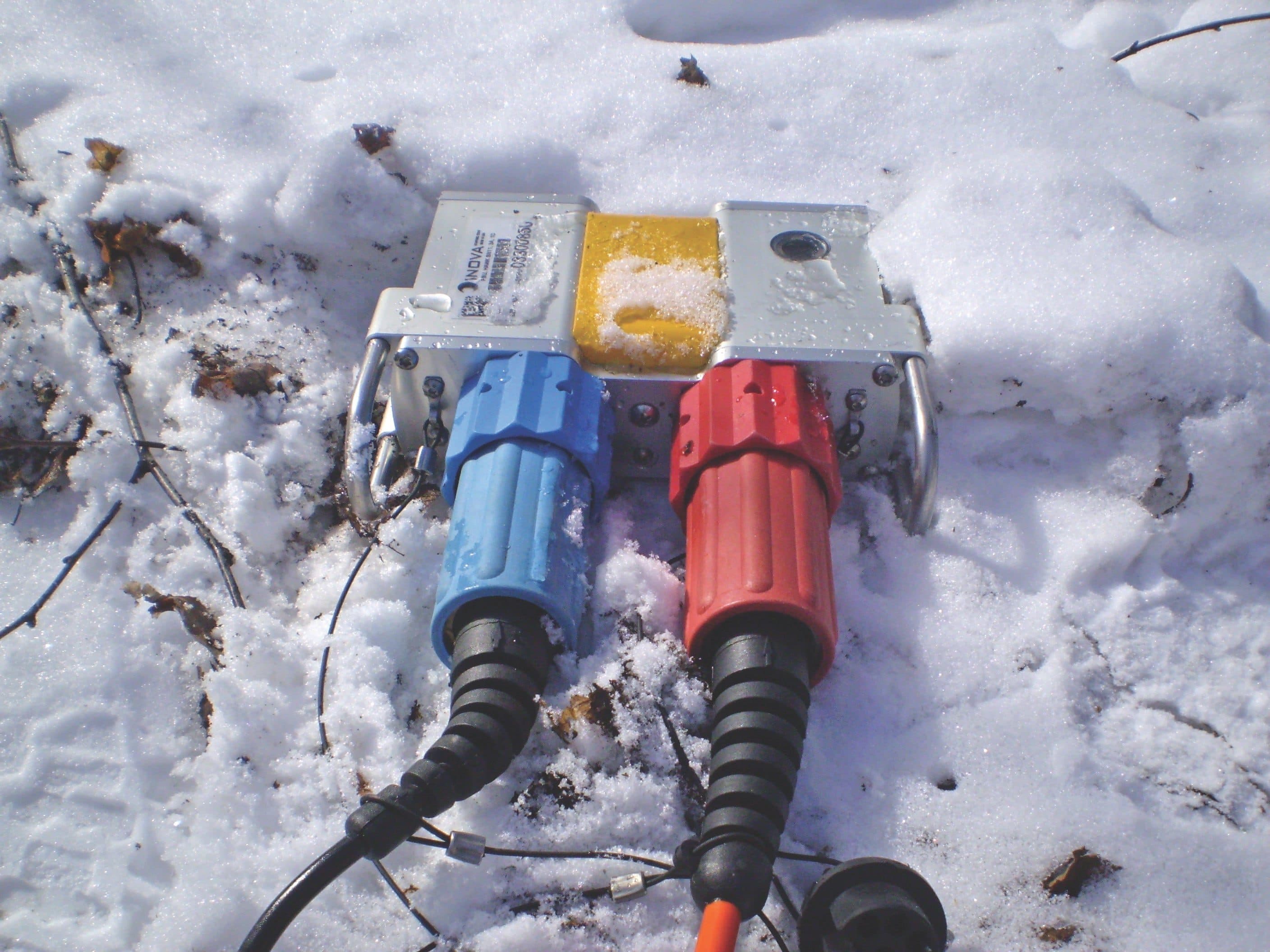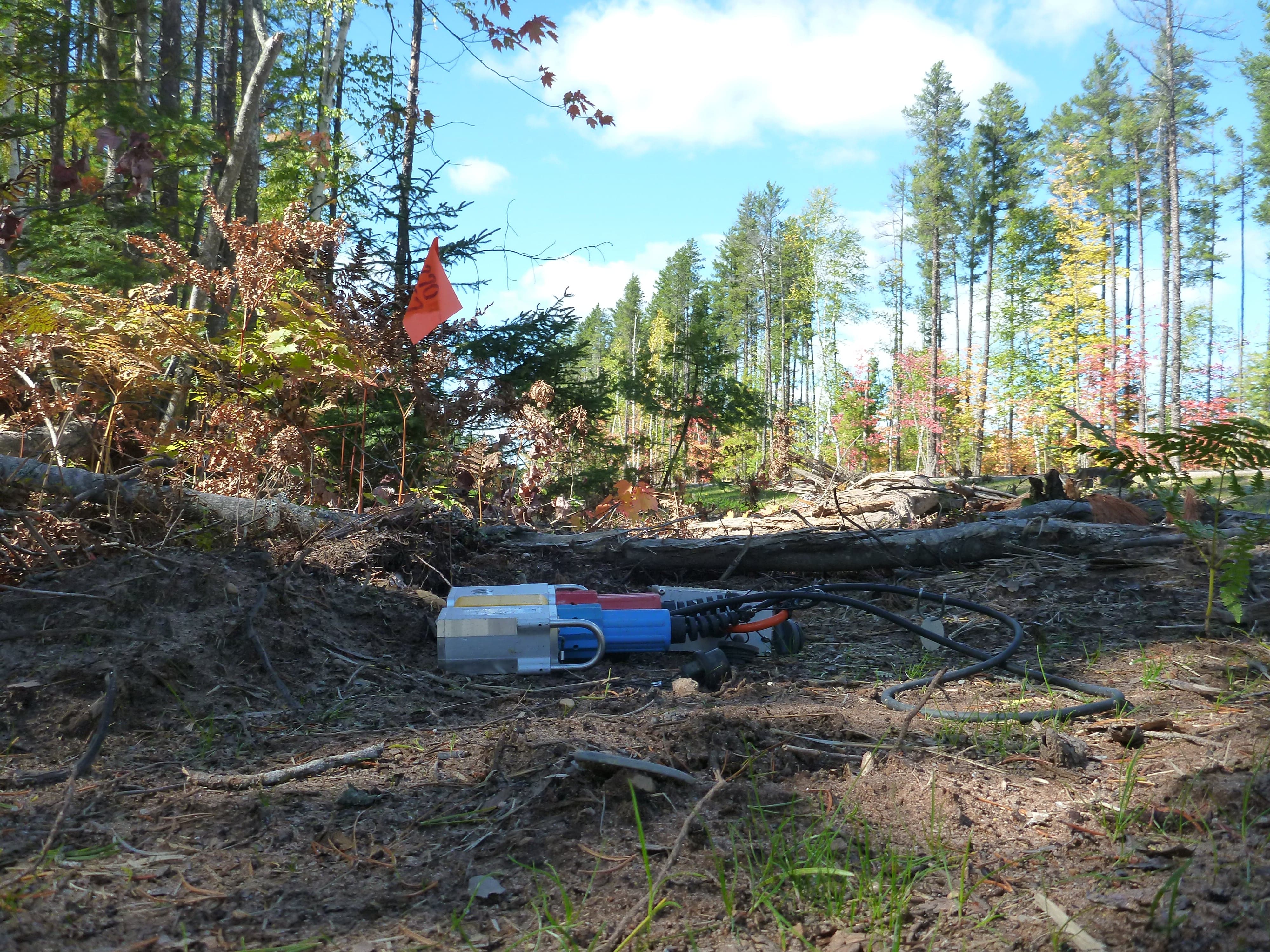
The Challenge
Over the past several years, E&P companies have augmented their exploration programs to pursue shale plays that require more advanced seismic acquisition technology. When exploring unconventional reservoirs such as the Marcellus shale, E&P companies and geophysical service providers face many operational and environmental obstacles. In many instances, the use of traditional cable-based systems is not practical.
Local residents and government officials are generally concerned with the environmental impact resulting from exploration programs. Proven, eco-friendly solutions are essential for satisfying the strict permitting regulations in the area. Therefore, the use of cableless acquisition systems is preferred to avoid obstacles and risks affiliated with deploying heavy cables in urbanized or environmentally sensitive areas. In addition, cableless systems allow for complete flexibility with survey design to capture as much subsurface imaging coverage as possible.
With proper sampling at the surface, single component geophones could be used to image the subsurface. However, multicomponent sensors used with the same sampling rate provides more information that can better characterize the rock properties beneath the surface. E&Ps must rely on experienced contractors using advanced technologies to capture high-resolution, multicomponent data for enhanced imaging of the shale. The detailed information allows for a better understanding of the deeply buried hydrocarbon locations and enables a higher percentage of successfully drilling gas producing wells.
In 2012, Tesla Exploration, Inc., a wholly-owned subsidiary of Tesla Exploration LTD, was awarded a 3D/3C cableless acquisition project located in northern West Virginia near the Allegheny Mountain Range. The survey area was surrounded by dense hardwood forests, steep valleys and rolling hills that posed significant health, safety and environmental (HSE) challenges. Field operations with cable-based recording systems would have been highly inefficient or nearly impossible in this area. Even for an experienced crew, navigating through the thick underbrush and terrain elevations to deploy equipment would be cumbersome and hazardous. Realizing the difficulties that lay ahead, Tesla selected INOVA's autonomous nodal technology, Hawk. They wanted to operate a survey that was safer and more efficient by taking advantage of the system's flexibility and simplicity.
When utilizing autonomous nodes contractors are genuinely worried whether or not their field stations are functioning properly and recording high-quality data during shooting. To alleviate this concern, Tesla wanted to perform wireless QC of field stations from helicopter, vehicles and by foot. Furthermore, the heavy canopy of 80-foot tall trees could interfere with WiFi QC transmission and GPS signal reception to the ground stations. Overcoming these obstructions was critical, so Tesla needed an acquisition system built with long-range wireless technologies and advanced QC tools for monitoring their field equipment.

The Solution
After validating the Hawk system first hand, Tesla purchased 10,000 Hawk stations (30,000 channels) configured to support up to three analog channels plus a digital VectorSeis 3C sensor interface for their upcoming projects. The first project, located near the Alleghenies of West Virginia, covered 80 square miles and required 7,200 of the 10,000 Hawk stations. Because of Hawk's lightweight frame, crews were able to transport the stations and batteries throughout the densely-wooded Allegheny region more efficiently than with a cable-based acquisition system. The use of VectorSeis multicomponent digital sensors further reduced station weight.
In addition to the conventional 3D/3C survey, Tesla was required to record data on several downhole arrays located on the project. The downhole arrays contained various types of analog sensors. Hawk’s channel flexibility allowed Tesla to record both the 3D survey digital sensors and downhole array analog sensors with the same acquisition system—greatly simplifying field operations. Approximately 225 Hawk stations were configured to record three component analog geophones placed downhole at the same time VectorSeis sensors were used to record the surface 3D program. Downhole array data would later be used for velocity characterization in support of future microseismic monitoring planned in the project area.
Tesla also procured two self-contained trailers that were custom-configured for this survey. A 40-foot trailer housed the data download and battery charging infrastructure while a smaller, 20-foot trailer was used for the Hawk central and QC station computers. Hawk's intuitive software is full-featured and supports graphical displays for managing the spread and generating reports as well as geophysical QC to ensure high-data quality acquisition. Crews performed data transcription, configured Hawk field stations for deployment and recharged batteries all within these facilities. Because of the survey's dense landscape, helicopters were used to transport Hawk stations, batteries and sensors in bags to quickly reach receiver locations. By taking advantage of Hawk's flexible architecture and deployment capabilities, crews hiked to each staked location point and quickly connected the Hawk stations and VectorSeis sensors. Even under the dense canopy, the stations acquired GPS lock within a few minutes of deployment and maintained a consistent lock that was verified daily through station QC.
We conducted this cableless acquisition project in one of the most challenging terrains in North America. Our crew deployed the Hawk field stations in some of the densest regions of the Allegheny forest. INOVA's nodal system quickly alleviated our concerns about blind recording by allowing us to acquire QC information wirelessly, not only on the ground, but also by helicopter. The operational flexibility and cableless design of the Hawk system was ideal for this project.
Gerard Clinton Crew 6 Party Chief, Tesla Exploration Inc. (Tesla U.S. subsidiary)

Hawk stations were swiftly deployed with VectorSeis digital sensors throughout the survey's wooded areas.

The Results
This 3D/3C project, AlleghenySCAN, consisted of 9,330 source points and 8,611 receiver points. Spacing between receiver and source points were 300 feet while receiver and source line intervals were 900 feet. Source points included a combination of 80% dynamite with 20% vibroseis infill along roadways.
This was Tesla Exploration's first large scale production program using the Hawk system. In spite of the terrain and logistical challenges, the crew managed the project operations with high consistency and efficiency (Figure 1). Station layout was completed within 38 days with an average of four crews alternating between layout and pickup. All source points were acquired within 38 days using an average of eight shooters and two vibroseis fleets for the infill source points. Final data download on the project was completed two days after the last stations were retrieved from the field.
To gain visibility into the spread, Hawk station QC was routinely performed by helicopter using the Connex Field Harvest Tool. Tesla checked the hardware status of the field stations, including its memory usage, battery voltage, sensor operations and GPS performance. The pilot maximized the helicopter's fuel efficiency by flying at altitudes of 200-250 feet around 50-60 knots on an initial pass down the line. Approximately 80% of stations on the line were QC’d on this pass. To capture QC data from the remaining stations, the pilot made a second pass on the line at a slower speed and lower altitude. These secondary stations were typically located in the densest areas of the forest where foliage had the greatest impact on wireless transmission.
The Tesla crew overcame Allegheny's terrain challenges while using the Hawk system and successfully completed the project on time without any HSE incidents. They said they were impressed with many of Hawk's features especially its easy-to-deploy architecture. Tesla also liked the system's transcriber software, its configuration capabilities, fast data download and ability to visually display the transcribed field stations on the survey map. The Hawk system's advanced QC features offered assurances for monitoring the status of equipment during shooting. And, the node's ruggedized aluminum enclosure designed to withstand rough handling in any environment, proved ideal for this project. With confidence gained from the first large-scale Hawk deployment and successful acquisition, the Tesla crew and equipment were mobilized directly to the next project as planned.

